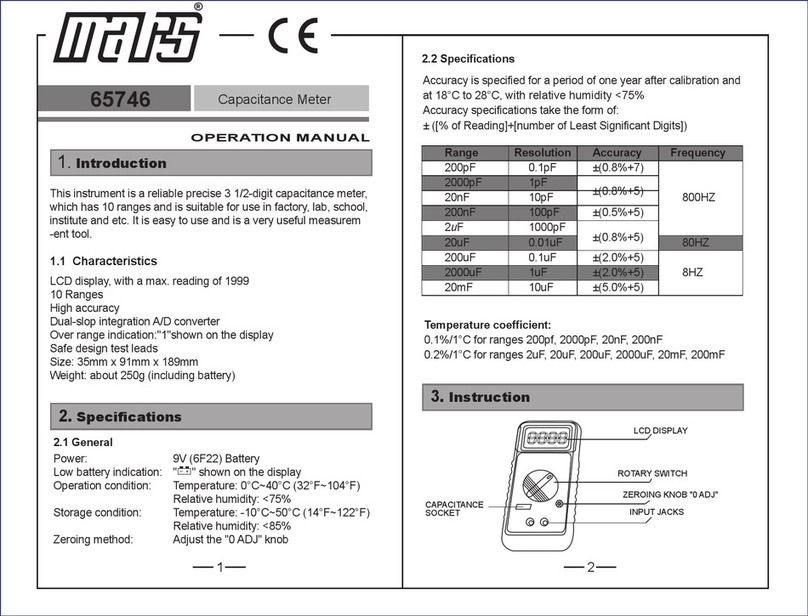4
1. Introduction
1.1. General description
Thank you for purchasing the m2multi AAD and we hope that you never nd yourself in a situation in which you would need to use it. Simply switch on the m2
multi in the chosen prole before the rst jump and it will quietly guard your safety from that moment until it is switched o again.
The “AAD” Automatic Activation Device is an automatic electronic safety device. The m2multi device continuously checks that the skydiver is not too close to
the ground without an open and functional parachute. It ensures the fall rate and altitude of the skydiver. If the m2multi evaluates the situation as dangerous
for the skydiver, its cutter automatically cuts the reserve parachute closing loop and thus initiates the sequence of reserve parachute deployment. It is designed
and manufactured on the basis of the latest ndings focused on sport skydiving and its functions fully comply with the requirements of current skydiving sport.
Professional engineers who are themselves excellent skydivers participated in its development. The device has ve dierent prole settings:
STUDENT, INTERMEDIATE, PROFESSIONAL, CANOPY PILOTING and TANDEM. When switched on, the m2multi works fully automatically, without any user
intervention.
1.2. Main advantages
The main advantages of the m2multi device are:
- ultra low power design - no battery replacement necessary for the service life duration
- service life 15 years + 6 months without the need to perform the prescribed servicing by the manufacturer
- compact smooth rounded metal construction
- minimum thickness of the body and the control unit
- water resistance up to 2m in salt or fresh water
- simple operation and many sophisticated additional features
- special at cutter design with a knife to cut the closing loop
1.3. Operating principle
The m2multi is an electronic automatic activation device, operating on the principle of pressure reading. The primary means for detecting the altitude
and fall rate is a pressure sensor. The altitude is calculated based on the dierence between two atmospheric pressures.The pressure at current altitude and
pressure on landing location“GROUND ZERO”. The pressure on the landing location is measured and set after switching on the device during calibration.
This pressure is automatically adjusted by a change in barometric pressure during the day without the need for user intervention. The m2multi checks
the ambient barometric pressure every 32 seconds and it determines whether the aircraft has taken o. If yes, it begins to monitor the skydiver’s altitude
and fall rate. The pressure sensor measures the atmospheric pressure 8x per second in free fall.
The information collected is evaluated by means of a microprocessor and ingenious software and it is converted to real fall rate and altitude. Thanks to this,
the m2multi device is capable of meeting the preset criteria of fall rate in combination with altitude above the landing location, cut the reserve parachute
closing loop by means of the cutter and thus initiate the deployment sequence. The device is activated only in the case the preset criteria are met; the
criteria dier depending on the set proles - STUDENT (Stu), INTERMEDIATE (Int), PROFESSIONAL (Pro), CANOPY PILOTING (Cpi) and TANDEM (Tan).




























